Throughout history, painters have introduced us to new ways of perceiving the world, reflecting both its beauty and its struggles, as well as the spirit of their times. Their art acts as a bridge, connecting the past and present, and allowing us to step into lives we can only imagine. The artists highlighted here were

Throughout history, painters have introduced us to new ways of perceiving the world, reflecting both its beauty and its struggles, as well as the spirit of their times. Their art acts as a bridge, connecting the past and present, and allowing us to step into lives we can only imagine. The artists highlighted here were pioneers who transformed art and left a significant impact on society. Through their bold styles and innovations, they reshaped how we understand humanity, proving that art is a language that transcends time. These masterpieces remind us of the deep connection between art and the human experience. Here’s a look at some of the most influential artists and the movements they helped shape.
- Sandro Botticelli (1445–1510) – Early Renaissance
Botticelli was a central figure in the Early Renaissance, known for blending classical themes with Christian symbolism. His iconic painting, The Birth of Venus, broke away from the strictly religious focus of earlier art by depicting the nude Venus, symbolizing beauty and love. His graceful lines and delicate color choices set his work apart, and his willingness to embrace mythological subjects opened the door for more secular themes in art. - Hieronymus Bosch (c. 1450–1516) – Early Netherlandish Art
Bosch’s surreal and often grotesque imagery captured human sin, morality, and the afterlife. The Garden of Earthly Delights is filled with fantastical creatures and detailed depictions of Heaven, Earth, and Hell, reflecting his unique view of human folly and spiritual reckoning. His work, filled with symbolism and imagination, was ahead of its time, influencing later surrealists. - Leonardo da Vinci (1452–1519) – High Renaissance
Leonardo da Vinci’s genius lay in combining scientific inquiry with artistic brilliance. His famous works, like the Mona Lisa and The Last Supper, are celebrated for their precise anatomical accuracy, use of light and shadow, and psychological depth. Da Vinci’s mastery of techniques like sfumato and chiaroscuro revolutionized portraiture and religious compositions. - Michelangelo Buonarroti (1475–1564) – High Renaissance
Michelangelo’s contributions to painting, sculpture, and architecture defined the Renaissance. His Sistine Chapel ceiling frescoes, particularly The Creation of Adam, showcase his mastery of human anatomy and his ability to convey deep emotional expression. His works elevated religious themes with dynamic imagery that would influence artists for centuries to come. - Raphael (1483–1520) – High Renaissance
Raphael’s works reflect the balance and harmony characteristic of the High Renaissance. His painting School of Athens brings together art, science, and philosophy, embodying the intellectual spirit of the time. Known for his graceful compositions and use of vibrant color, Raphael set a high standard for future artists. - Titian (c. 1488–1576) – Venetian Renaissance
Titian revolutionized Venetian painting with his innovative use of color, bringing depth and vibrancy to his works. His masterpieces like Assumption of the Virgin and Venus of Urbino set new standards for dynamic compositions and emotional depth. His techniques, particularly in color layering, influenced artists long after his time. - Caravaggio (1571–1610) – Baroque
Caravaggio’s dramatic use of light and shadow brought intense realism to his religious scenes. His unique approach, where everyday people are depicted in sacred contexts, challenged the conventions of religious art. Known for his emotional intensity, Caravaggio’s work had a lasting influence on the Baroque movement across Europe. - Rembrandt van Rijn (1606–1669) – Dutch Golden Age
Rembrandt’s ability to capture psychological depth in his portraits, especially with his expressive use of light, made his work stand out. The Night Watch and his self-portraits revealed not only his technical skill but also his introspective approach to art, influencing portraiture for generations. - Johannes Vermeer (1632–1675) – Dutch Golden Age
Vermeer’s intimate and detailed depictions of domestic life, such as Girl with a Pearl Earring and The Milkmaid, are celebrated for their calm beauty and use of light. His ability to create serene, contemplative atmospheres influenced later genre painters and remains a hallmark of his style. - Jean-Honoré Fragonard (1732–1806) – Rococo
Fragonard’s playful and romantic art, exemplified in works like The Swing, embodies the elegance and charm of the Rococo era. Known for his light, whimsical compositions, Fragonard captured the carefree spirit of French aristocracy, offering a glimpse into a world that would soon change with the French Revolution. - Édouard Manet (1832–1883) – Realism/Impressionism
Manet’s bold approach to modern life, seen in works like Olympia and Luncheon on the Grass, broke with tradition by depicting contemporary subjects in a direct, unidealized way. His exploration of real, unfiltered scenes laid the groundwork for Impressionism, pushing the boundaries of what could be depicted in art. - James Tissot (1836–1902) – Realism/Impressionism
Tissot’s highly detailed portrayals of Victorian life, such as The Ball on Shipboard, captured the elegance and sophistication of the era. His attention to fashion, decor, and social gatherings offers a vivid look at the high society of the 19th century. - Edgar Degas (1834–1917) – Impressionism
Known for his focus on movement and urban life, Degas captured moments of modernity, especially in the world of ballet. His unconventional compositions and perspectives, along with his ability to portray the dynamic energy of dance, gave Impressionism a new direction. - Claude Monet (1840–1926) – Impressionism
Monet’s emphasis on light and atmosphere over detail, as seen in works like Impression, Sunrise and the Water Lilies series, was groundbreaking. His ability to capture fleeting moments through vibrant color and shifting light had a profound impact on the development of modern art, inspiring abstraction. - Vincent van Gogh (1853–1890) – Post-Impressionism
Van Gogh’s emotive brushstrokes and bold color choices, especially in works like Starry Night and Sunflowers, conveyed his intense emotional and psychological state. His expressive style influenced the Expressionist movement, showing that art could be a channel for personal feeling. - Piet Mondrian (1872–1944) – Abstract Art
Mondrian’s focus on geometric abstraction, using grids and primary colors, defined his vision of pure artistic expression. His work influenced the development of minimalism and modern design, making him a key figure in 20th-century abstract art. - Pablo Picasso (1881–1973) – Cubism/Surrealism
Picasso revolutionized art by co-creating Cubism, a movement that deconstructed forms into geometric shapes. His constant reinvention of style, including Surrealism, cemented his influence on modern art and inspired generations of artists to experiment with form and content. - René Magritte (1898–1967) – Surrealism
Magritte’s surrealist paintings, like The Lovers and The Son of Man, challenged perceptions of reality. His works, filled with visual paradoxes, encourage viewers to question the nature of love, perception, and intimacy, influencing both conceptual art and pop culture. - Edward Hopper (1882–1967) – American Realism
Hopper’s iconic depictions of American life, such as Nighthawks, capture feelings of isolation and introspection. His use of light and empty spaces created a haunting atmosphere, making his work a powerful commentary on the psychological impact of modern life. - Grant Wood (1891–1942) – American Regionalism
Grant Wood is best known for American Gothic, a painting that celebrates the resilience of rural America. His focus on traditional values and his realistic portrayal of simple life during the Great Depression made him a key figure in American art. - Salvador Dalí (1904–1989) – Surrealism
Dalí’s surrealist paintings, like The Persistence of Memory, blend realistic techniques with fantastical elements. His exploration of time, memory, and the subconscious made him a central figure in the Surrealist movement and influenced various fields beyond art. - Frida Kahlo (1907–1954) – Surrealism/Folk Art
Kahlo’s deeply personal self-portraits explore themes of identity, pain, and resilience. Works like The Two Fridas reflect her dual heritage, while her combination of surrealism and Mexican folk art creates a powerful visual narrative that resonates with feminist and postcolonial movements. - Andrew Wyeth (1917–2009) – American Realism
Wyeth’s realist works, including Christina’s World, capture the isolation and emotional depth of rural American life. His detailed, introspective style continues to influence realist painters today. - Norman Rockwell (1894–1978) – American Realism
Rockwell’s illustrations, such as Freedom from Want, depict the idealized spirit of mid-20th-century America. His detailed portrayals of American life, including social issues like racial integration, have had a lasting impact on both American art and culture. - Andy Warhol (1928–1987) – Pop Art
Warhol’s work blurred the lines between commercial culture and fine art, using everyday objects like Campbell’s Soup Cans to explore consumerism and mass production. His exploration of fame and identity, along with his iconic Marilyn Monroe image, made him a central figure in modern art and popular culture.
Each of these artists challenged the conventions of their time, pushing the boundaries of what art could represent. Their work continues to influence and inspire, leaving legacies that resonate across generations.
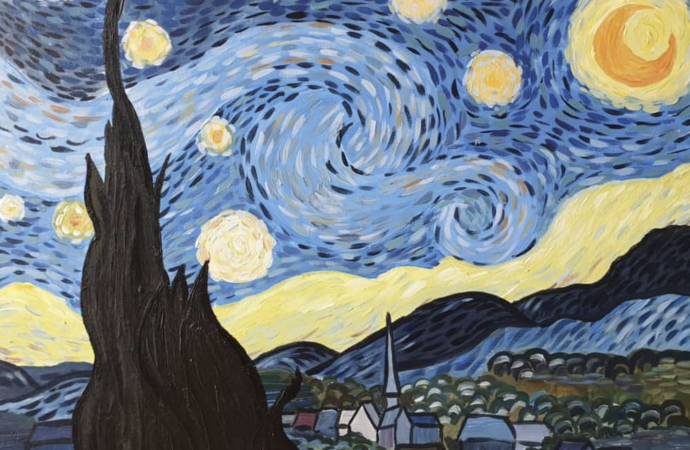
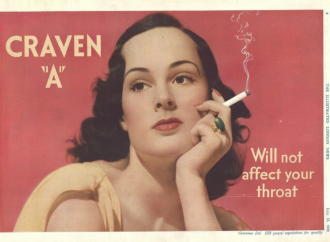



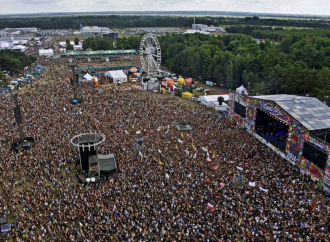









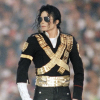
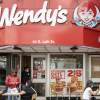
Leave a Comment
Your email address will not be published. Required fields are marked with *